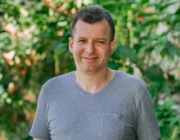. 2019. “Limits On Spectral Resolution Measurements By Quantum Probes”. Physical Review Letters, 122, 6. https://doi.org/10.1103/PhysRevLett.122.060503. Publisher's Version
2019
. 3/1/2019. “Sensing Nano-Nmr Diffusion Spectra Using A Nitrogen Vacancy Center”. Optical, Opto-Atomic, And Entanglement-Enhanced Precision Metrology, 10934. https://doi.org/10.1117/12.2516596. Publisher's Version
. 2019. “Mixed Dynamical Decoupling”. Quantum Science And Technology, 4, 3. https://iopscience.iop.org/article/10.1088/2058-9565/ab2afd. Publisher's Version
. 11/1/2019. “Overcoming Resolution Limits With Quantum Sensing”. Nature Communications, 10. https://www.nature.com/articles/s41467-019-12817-y. Publisher's Version
. 3/29/2019. “Quantum Control And Sensing Of Nuclear Spins By Electron Spins Under Power Limitations”. Physical Review Letters, 122, 12. https://doi.org/10.1103/PhysRevLett.122.120403. Publisher's Version
. 11/28/2019. “Nv Center Based Nano-Nmr Enhanced By Deep Learning”. Scientific Reports, 9. https://doi.org/10.1038/s41598-019-54119-9. Publisher's Version
. 8/2019. “Robust Optical Clock Transitions In Trapped Ions Using Dynamical Decoupling”. New Journal Of Physics, 21. https://iopscience.iop.org/article/10.1088/1367-2630/ab3871. Publisher's Version








